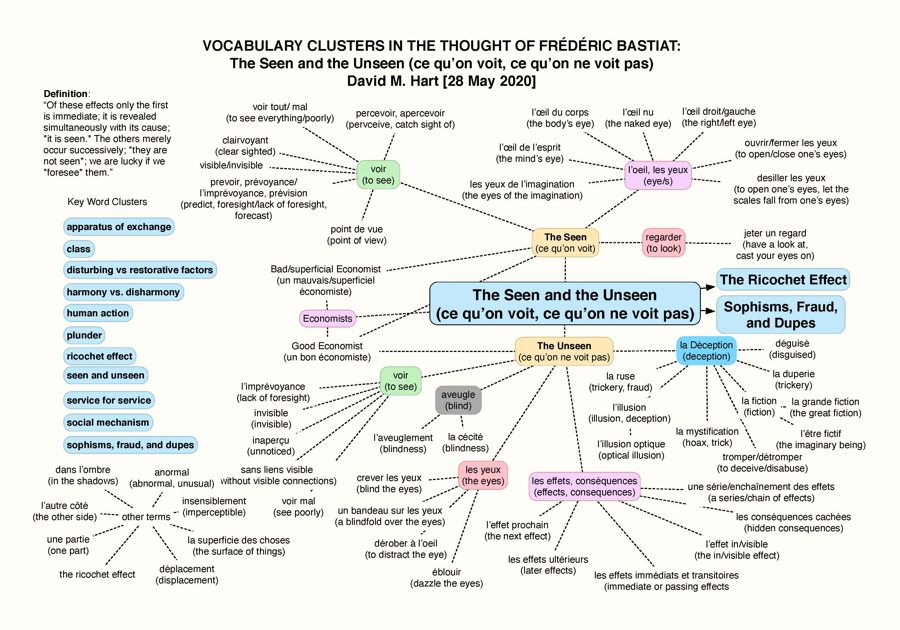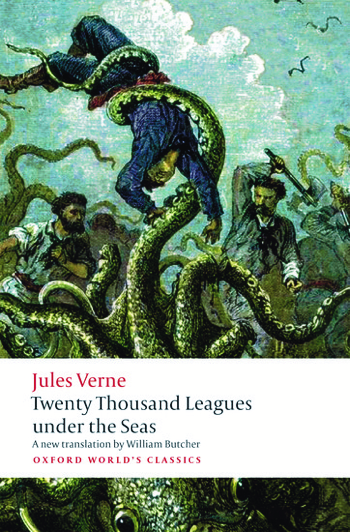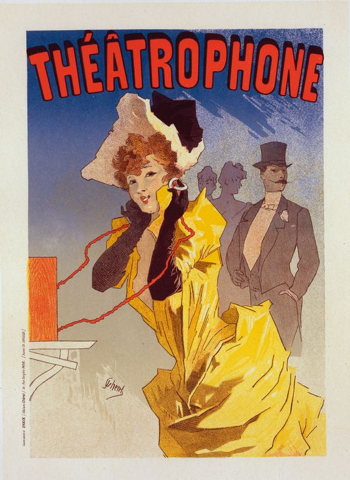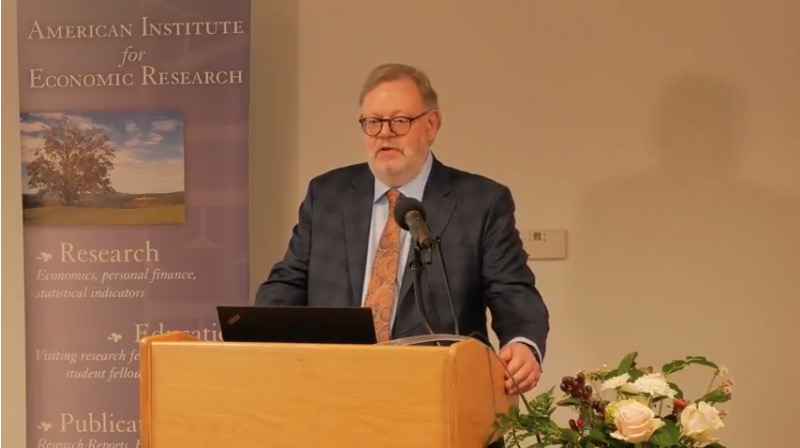A shorter version of this essay appeared on the American Institute for Economic Research website.
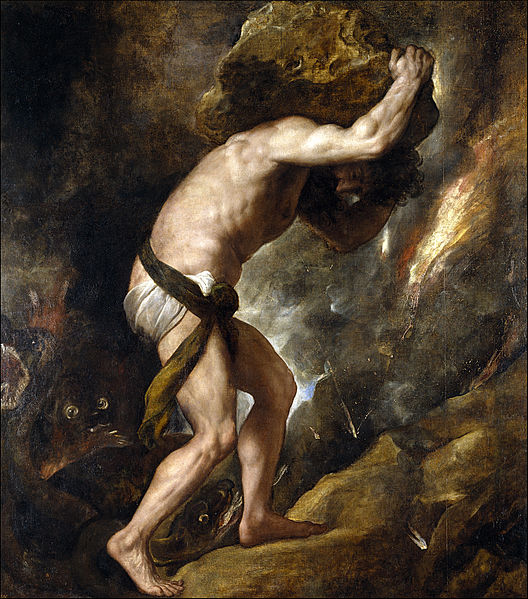
Titian, “Sisyphus” (1548-49).
Introduction
There are several deep intellectual and cultural issues which underly the bad policies being introduced by governments all around the world in response to the present crisis. This is only the most recent crisis in a string of crises which have emerged over the past 20 years which have produced similar results. The policies developed and chosen by governments and accepted by the mass of voters are based upon these long-standing, pre-existing ideas and beliefs. It is my view that, if we want to change these policies or perhaps even to prevent similar ones from being put into practice in the future, we need to address these deeper issues. They are the foundation, if you like, upon which the policies are built. So long as people continue to hold these beliefs they will continue to advocate and support policies which are destructive of individual liberty, economic prosperity, and voluntary social interaction.
I believe these deeper issues can be broken down into four groups:
- the mathematics and statistics of risk
- the moral foundations of a free society
- the basic concepts of economic theory
- the history of government behavior and the operation of markets
(1.) The mathematics and statistics of risk
What the events of Sept. 11, 2001 and the current coronavirus panic have in common is a misunderstanding of the basic mathematics of risk analysis. People in 2001 had no idea that the risk of dying from a terrorist attack was so minimal it was statistically insignificant (compared to dying in a car accident or falling off a ladder at home). There is a great deal of information (usually collected by government bureaucracies like the Center for Disease Control) available to the public for them to inform themselves about the risks they face in going about their normal lives. If they were unable or unwilling to this themselves it should have the responsibility of the press and the schools to provide them with this information so they could make an informed choice. These risks include natural risks (deaths caused by tornadoes and floods, flu viruses), social risks (like accidents at work, or in the home, homicide rates, car accidents), and avoidable personal risks (such as those resulting from “lifestyle choices” like diet, exercise, and drug consumption). Yet in the wake of September 11, 2001 in spite of the fact that the risk an individual person might face of death by a terrorist act was far, far less than other risks they accepted as a normal fact of living in a society, voters allowed a whole new massive government bureaucracy to be built at huge cost (the TSA); the passage of the PATRIOT Act; and the invasions of Afghanistan and Iraq.
Similarly with the coronavirus panic. People have little appreciation of how many people die in any given year (such as from heart disease, stroke, cancer, diabetes, opioids and other drugs) especially deaths in a typical flu season. The latter is especially relevant in the present circumstances as such knowledge would have provided a rough benchmark for making a reasonable judgement about how serious the problem is and what to do about it. The most recent bad flu season was 2017-18 when the CDC estimated that 810,000 (between 620,000 – 1.4 million) Americans were hospitalized and 61,000 (between 46,000-95,000) died. Data from CDC]. As I write (April 24, 2020), the current “tally” of cases and deaths from the CV in the United States stands at 878,974 cases and 49,754 cases, figures which need to be taken with a grain of salt given the lack of consistency across the country of diagnosing and recording this information. During the 2017-18 flu season the mainstream media did not give a running total every day of “cases” and deaths, like it was some kind of medical olympics medal tally, as it does today. A reasonable person who understood something about comparative risk and the history of recent epidemics would have judged the current epidemic in the light this knowledge provided and would have concluded that the risks we faced were ones which our society has come to accept as normal (or at least within the bounds of being tolerable) and which does not require the complete lockdown of people in their homes and the trashing of large sectors of the economy.
(2.) The moral foundations of a free society
In a crisis people revert to their default moral position, which in the modern world is the cry for “the government to do something.” This, as libertarians know (and perhaps only libertarians know), is a call for the government to use its coercive powers to force people to do certain things (or not do certain things), to tax, to spend, to “stimulate” (in other words to “distort”) the economy, and so on. If people had a different default moral position – that the use of coercion is wrong, that individual rights to life, liberty, and property are “sacred” – then they would not tolerate the government violating these things.
It used to be the case in 19th century America and England that the default moral position was to look after yourself and your own family and not to be a burden on others, to treat other peoples’ property with respect, to leave other people alone even if they were doing something you did not morally approve of, and not to call upon the government to solve every problem but to work things out for yourself or with the cooperation of your immediate neighbors. There were exceptions to this of course, most notably with the temperance movement to ban the sale and consumption of alcohol. Unfortunately today, the default moral position seems to be the exact opposite: to ask (perhaps even to beg) the government to solve all the problems one faces (in other words “to do something”), for the government to coerce people into behaving (or not behaving) in particular ways as determined by the experts they have consulted, to use taxpayers money to care for the people government policies have put out of work, and for the government to provide a constant stream of reassuring words to a frightened population about how they will solve the problem. This to me reeks of the “infantilization of the public” by a paternalistic and technocratic state and not the way a free and responsible population and society should function.
It seems the case that many (perhaps now most) people are either ignorant of the principles upon which a free society should be built, especially the historical case provided by the American Revolution, the Declaration of Independence, the Constitution, and the Bill of Rights; or they have rejected them as no longer desirable or practical / useful. These are the principles based upon natural law and natural rights that set out the individual’s rights to life, liberty, and property, and the political arrangements which flow from these beliefs. These are governments with very limited power and with very minimal taxation powers; where there is a separation of power between the different branches of government to ensure that no one branch can become too powerful; with constitutionally protected rights to freedom of speech, association, trade, private behavior; and which pursues a policy of peace and non-intervention with other countries.
Whether people do not hold these moral beliefs because they once knew about them but have “forgotten,” or never knew them because of gaps in their (public) education, or because they have come to reject them as wrong or harmful, the task we face is to provide them with the theoretical and historical arguments to show why they should reconsider their position. If it is a matter of them having forgotten or never having been taught these principles or about the institutions which embody them, then the task is relatively straight forward, though not easy. If it is a matter of them having rejected these ideas because they find various flavors of “progressivism”, socialism, or “crisis” utilitarianism preferable then our task is much, much harder and will take much longer to achieve.
The United States has a built in advantage compared to most other states in that its late 18th century Constitution and Bill of Rights is very libertarian in spirit and much revered in public rhetoric and in civic rituals, so in theory if not always in practice. Therefore, libertarians and other pro-liberty groups can work within the existing constitution by interpreting it as much as possible according to what I would call its “libertarian originalism”, and within the existing educational institutions by emphasizing its true “libertarian radicalism.” This is not the case unfortunately in other countries whose constitutions were developed in the 20th century when “progressive” or social democratic ideas were the dominant ones. In those countries the strategy for limiting government power and defending individual liberty will have to be tailored accordingly. In the case of my own country, Australia, the constitution which emerged in the 1890s and which came into effect in 1901 was renowned for its “progressive” nature and the stage was set for the rise of state interventionism throughout the 20th century based upon nineteenth century colonial practice and on early court rulings institutionalizing the price setting of wages by the state (compulsory wage arbitration), strict immigration restrictions (the so-called “White Australia” policy), state ownership of the major means of communication (the railways), and protectionism. This makes the task of creating a truly free society (both in terms of the ideology which sustains it and the instituions which makes this possible) quite different and more difficult than it does in the United States.
Within the academy, the debate seems to have been won by the progressives and the utilitarians (and perhaps in one sense also by the Marxists). There is now a significant body of work in philosophy on the natural rights tradition of political thought (perhaps going back to the pathbreaking work of Robert Nozick in 1974, Anarchy, State, and Utopia) but this has been counterbalanced by the even more influential work of John Rawls, A Theory of Justice (1971), and the continued interest in various forms of social democracy and even Marxism. A serious problem is that the universities became stacked with left-leaning scholars as a result tof the rapid expansion of the academy in the 1960s and 1970s. This expansion was a once in a lifetime event for the post-war baby-boomer generation and they seized the opportunity with some gusto. Nothing similar will help the career opportunities for libertarian scholars today who will have to fight for the scholarly scraps which will be left as this baby-boomer generation of scholars retires.
Given this “left” leaning stance of the universities, is there any surprise that students by and large are more concerned about “equality,” “the environment”, and “social justice” than they seem to be about the individual’s natural right to life, liberty, and property? I say “by and large” because we have seen encouraging spurts of activity and interest in these principles in the movement which sprang up around Ron Paul in 2016, and the growth of groups like Students for Liberty. The question we face today is how to inspire more students to take the principles of natural rights seriously and to use them as the grounds upon which to challenge the many injustices which are obviously around them.
I fear that unless the default position of people in a crisis is to respect the rights to life, liberty, and property of others then the prospects for liberty are rather bleak. Today, the default position of people is to defer to the government to “do something”; to accept the government’s right and duty to engage in “crisis utilitarian” calculations of what is in the “best interest” of “the nation” in the first instance and “the greatest number” of the people in the second; to accept the advice of a selected group of “experts” and “technocrats” who can “create the models”, insert the ”correct data”, “do the calculations,” and then tell us what we should do.
The kind of society I would like to live in is one where the default moral position is the “presumption of liberty” not the “presumption of coercion” which is what the call for the government “to do something” entails.
(3.) The basic concepts of economic theory
The events following Hurricane Katrina in 2005, the financial crisis of 2008-9, and now the novel coronavirus epidemic of 2019-20 show a similar gaping hole in the understanding of ordinary people about the basic concepts of economics. The calls to end “price gouging,” the ban on supermarkets raising their prices for things like toilet paper thus causing the emptying of shelves, the call for governments to take over the payment of wages for workers, to bailout the banks and airlines, to pay for child care for those laid off, and to make massive injections of new money into the economy to prop up failing businesses, etc.
This reveals that many (perhaps most) ordinary people obviously still have no idea about tradeoffs, opportunity cost, the role of prices in transmitting information, the nature of money as a medium of exchange, the self-interested behavior of politicians and bureaucrats, just to list a few. What is even more disturbing is that many academic economists also have similar gaps in their understanding. Just in the past week in Australia an economist at the University of New South Wales (in Sydney) had the courage to talk about trade offs when trying to decide whose lives could and should be “saved” (and many other decisions taken by governments to “solve” the economic crisis – she even mentioned the invisible or “unseen” costs and consequences of government intervention), only to be denounced in an open letter of over a hundred other concerned academic economists for her callousness in even raising the subject.
At the time of the Global Financial Crisis the Keynesian view of money and banking suddenly reemerged (even among economists supposedly friendly to free markets) after its validity had been questioned and increasingly discredited by a number of economists after the 1970s period of “stagflation”. Something similar is happening today though on an even grander scale which was unimaginable ten years ago. The prevailing view, among academic economists and the general public, seems to be that the government can magically create wealth out of thin air, can fix the economy by putting a bit more money here and taking a bit away from there, can transfer wealth from some to others with little long term consequences, and that losing one’s job or one’s business does not have serious personal and psychological consequences, let alone that it violates their rights when ordered to do so by the state.
The public seems to have accepted the legitimacy of the government calling upon experts, especially technocrats in the fields of medicine and epidemiology, to make very serious decisions of an economic nature. When they do call upon economists to supplement this technical medical advice, governments almost universally only call upon economists for advice whom they are certain will support their interventions into the economy almost without question. One might ask where are the moral philosophers, the constitutional experts, the natural rights political philosophers, and the free market economists and dare I say it, the Austrian economists? Had they done so, they might have heard from the latter about the unintended consequences of their actions, the creation of perverse incentives, the importance of prices signaling to consumers and producers what needs to be produced most urgently, the fragility of complex supply chains, the distortions created in the long and complex structure of production, and the dangers caused by interest rates which are “too low”, and so on.
The subtlety and complexity of concepts like “unintended consequences” might escape technocrats and politicians but economists need to make the arguments clear. For example, these unintended consequences might be “bad”, when people do not go to hospital for regular treatment for their heart condition or cancer treatment because they fear getting infected by the CV in the hospital, resulting in an increased death toll as a result. Or they might be “good”, when fewer people drive to work because of the lockdown and furloughs which will result in lower road deaths, and more people washing their hands, etc., thus reducing expected deaths from the regular flu. We will only know the answer to these questions in a year or so when we have more complete and accurate data on “excess deaths” which will reveal the full scope and consequences of what is unfolding before our eyes.
One could go on at some length (and some free market economists have already done so) about the other indirect, long-term, and hidden (unseen) economic consequences of the actions taken by government to “solve” the CV problem, so I will not do that here. What I will say is that the lack of understanding of what I would regard as basic economic principles, or what the great Paul Heyne called “the economic way of thinking”, is so great and so deep-seated that it shows how much work has to be done to make the average educated peson aware of these principles. One might also add to the scale of the problem the absence in most introductory economic textbooks of any discussion of basic “public choice” concepts such as the self-interested behavior of bureaucrats and politicians which can produce “government failure,” an elementary knowledge of which might weaken voters’ faith in the ability of government to solve any problem let alone a massive one like a viral pandemic and the shutdown of entire economies. I think there are several books to be written about the many “government failures” which we have witnessed over the past year or so.
(4.) The history of government behavior and the operation of markets
We can see from the explosion of interest in and support for “socialism” over the past few years, especially among young people, that the supporters of socialism have no idea about the horrendous loss of life and destruction of wealth caused by attempts throughout the 20th century to impose socialism / Marxism. Or the economic catastrophe which is central planning. The disaster of communism and central planning is only one side of the coin, the side with the dark patina as it were. The other side which is bright and shiny is an appreciation of the benefits which free markets and free societies confer not just on economic wellbeing but also on the ability of people to fulfill their life dreams and plans whatever they might be. The latter is probably just s misunderstood as the true nature of socialism his. Both are the result of a serious failure of the teaching of history in the high schools and universities.
When I first became interested in history and economics in the early 1970s when I was at high school I read about the corruption of power (Shakespeare), the tyranny of undemocratic socialism (George Orwell), and the mass incarceration and death taking place in the Soviet Gulags (Solzhenitsyn). I have see not seen any similar comparable interest by students in these matters over the past 20 years. The absence of interest in or knowledge of these matters is truly an example of George Orwell’s “memory hole” into which historical truths disappear, never to appear again. It is a failing of English and History teachers in the schools that the current generation of students have not been exposed to this kind of literature, journalism, and history. This lack of exposure in the high schools is compounded by a similar memory hole at university and in the mainstream press. That a film like Raoul Peck’s The Young Marx could be funded by state TV and film bodies in the EU and favorably reviewed the MSM in this country says much about the current state of our problem. Where was the public outcry over the release of this film and its contents which is comparable to that over Woody Allen’s recently published autobiography? At least Allen was a funny comic and a great filmmaker, even if he may have had some other personal foibles.
But the forgetting is not just of history, it is also of theory as well. There are very good reasons which explain why socialism has failed so miserably, and why it results in massive slaughter when rulers attempt to impose this unworkable system on societies by force. This year is the centennial of the publication of one of the major early 20th century works which exposed the unworkability of central planning which was a key feature of the communist system – Ludwig von Mises’ essay “Economic Calculation in the Socialist Commonwealth” which was soon followed by his magisterial book Socialism in 1922. There had been many exposures of the economic problems of socialism which go back to the 1840s (Bastiat was a key figure in this early critique of socialism) but it took the outbreak of the Bolshevik Revolution in 1917 to bring it to the attention of a broader public. For over 60 years there was a steady stream of solid theoretical work which debunked the claims of socialist planning, beginning with Ludwig von Mises, continuing with Friedrich Hayek, and then with Don Lavoie. The question we need to ask ourselves is, why isn’t this theoretical work better known among academics, intellectuals, and politicians, and what can owe do to make it better known?
People, as Hayek argued, learn most of their economics from the study of history, so their misunderstanding of the consequences of past government interventions in the economy, the cause of recessions/depressions, the failure of price controls (like rent control), leads to calls to “regulate” capitalism to stop its negative effects. There is a similar problem with the public’s lack of understanding of the history of how markets have caused the welfare of ordinary citizens to rise so dramatically over the past 200 years since the Great Enrichment began. When I was learning about how free markets operated it was the work of Ayn Rand, especially her work extolling “the virtues of capitalism” that caught my attention, although she was not trained as an historian. We now have much better works to tell us about the wonders of the market, and I note in particular the detailed historical work by Deidre McCloskey, in addition to the many more popular works which are available.
Conclusion
My conclusion is that the rebuilding of a free society after this chaos is over will require a great deal of work in the above four areas: mathematics and statistics, moral philosophy, history, and economics. Greater knowledge and a better appreciation of their importance is required if we want the general public to have greater skepticism about the ability of governments to plan and regulate our private and economic activity, an awareness of the necessity of a having a strong moral foundation for the defense of individual liberty and limited government, an understanding of the sometimes subtle but powerful ways in which free markets function to satisfy our diverse and changing needs, and the human and economic catastrophe which will inevitably result if we allow governments any opportunity to impose central planning of the economy ever again.
In my darker moments I think that in fact we have gone back to ground zero in all of these areas. In spite of the fact we have many, many more libertarian academics, teachers, journalists, bloggers, and writers than ever before, it now seems that, like Sisyphus, just when we thought we had pushed the heavy stone of statism up to the top of the hill and just when we thought one more push would see it tip over the edge and fall into the abyss, the stone slipped from our fingers and rolled back down our side of the hill. We now face the prospect of pushing it back all the way back up to the top of the hill again. The question is, what will it take for us to be able to push it over the edge this time around? Given the inevitable trade-offs we have to face in making any decision about what to do in the future with our scarce resources, we need to ask ourselves how much of those resources should we spend on policy matters and how much on changing the underlying ideas upon which policy matters rest?
